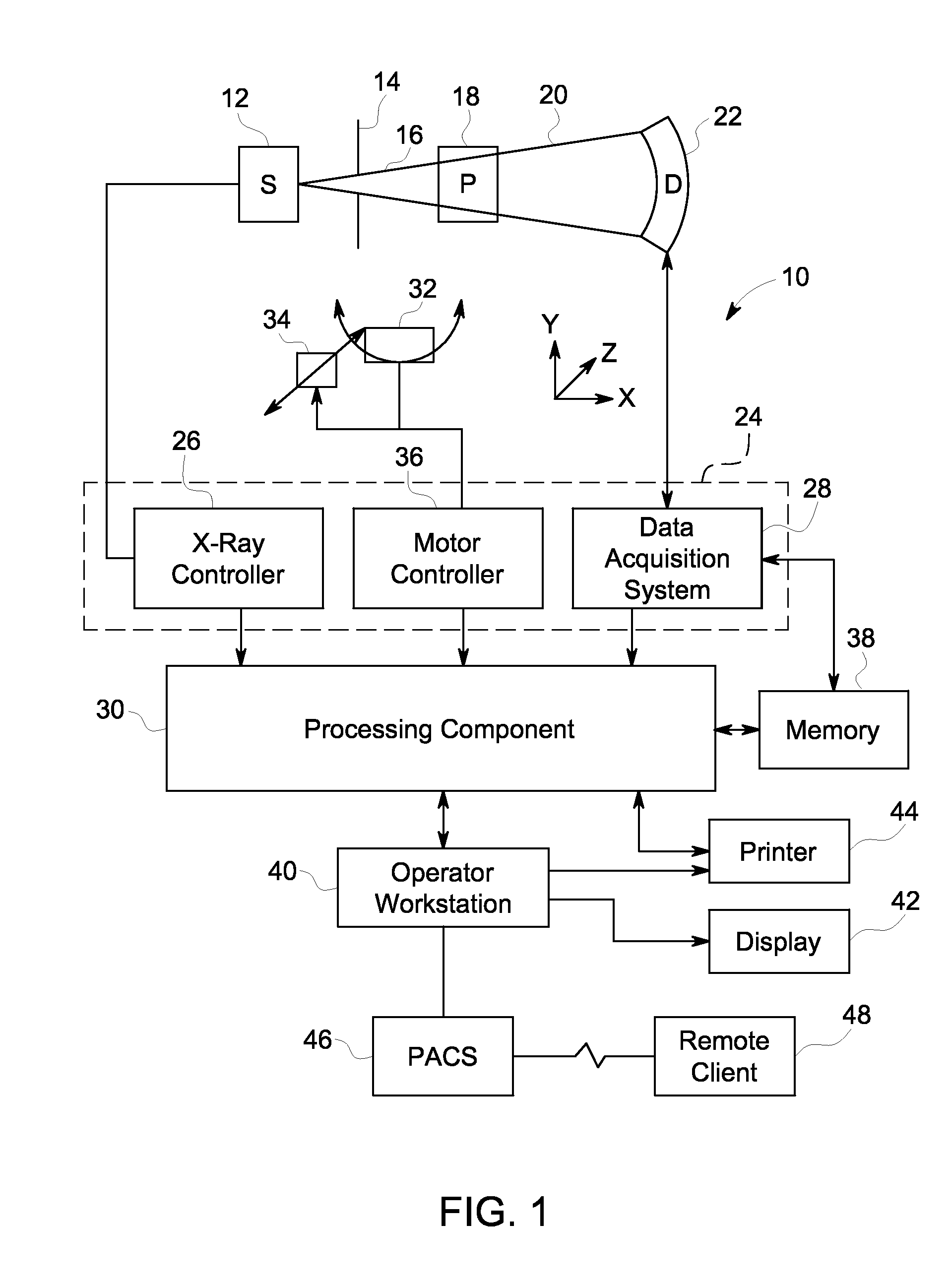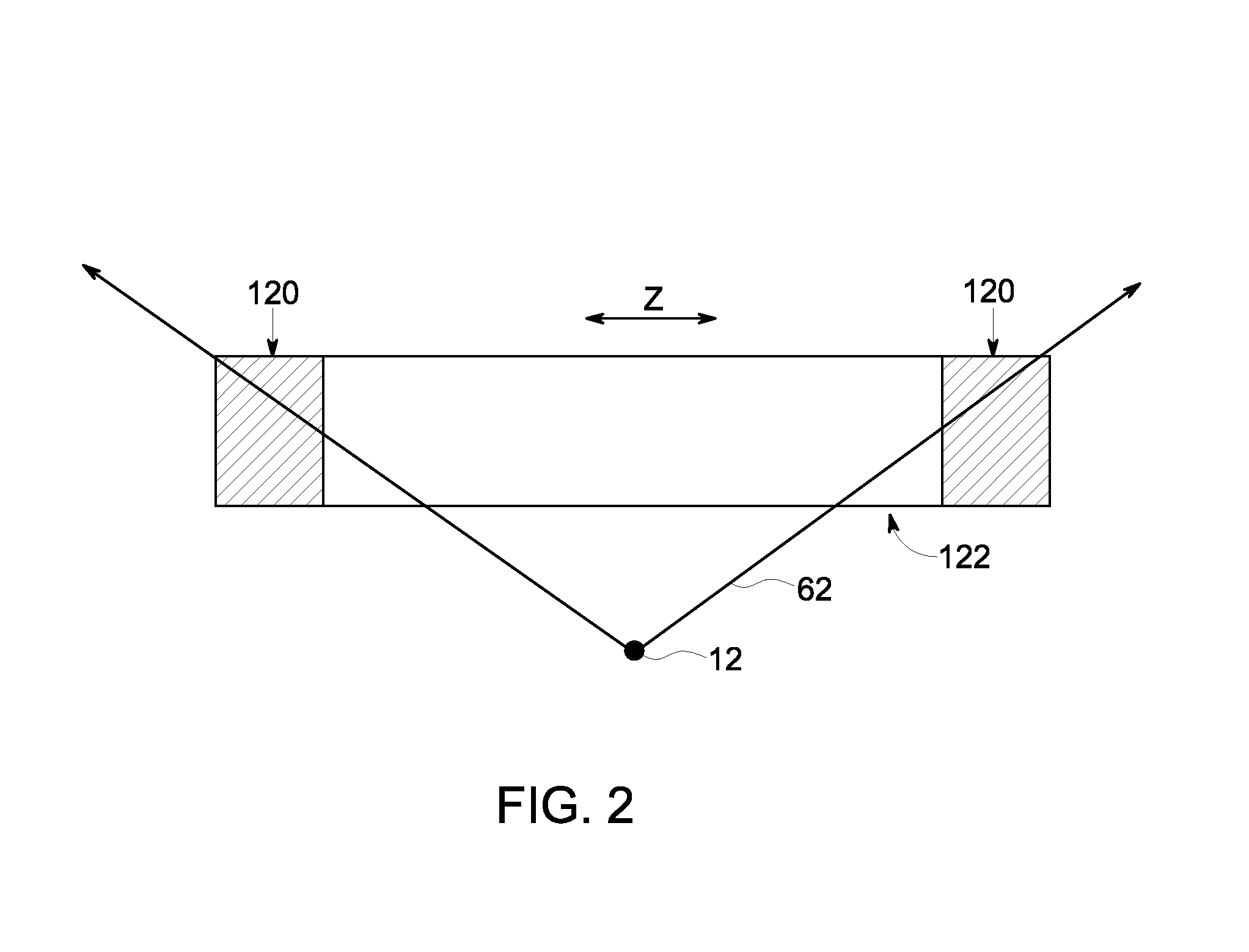Method and system for reconstruction of tomographic images
a tomographic image and reconstruction method technology, applied in the field of tomographic image reconstruction methods and systems, can solve the problems of artifacts or other imperfections in the reconstructed image, and the third-generation cone-beam ct may suffer from cone-beam artifacts
- Summary
- Abstract
- Description
- Claims
- Application Information
AI Technical Summary
Benefits of technology
Problems solved by technology
Method used
Image
Examples
Embodiment Construction
[0018]Embodiments disclosed herein provide algorithms for the reconstruction of images from data collected using cone-beam computed tomography (CT). The algorithms address artifacts attributable to one or more of truncation of data in the z-direction, mishandled data due to incorrect data redundancy weighting, and / or missing frequency data. In accordance with certain embodiments, approaches are described for reconstructing image data, such as axial or helical scan data, in instances where some view data may be missing, such as in instances where there is data truncation. The present approaches may be suitable for use in an iterative reconstruction approach, such as a model-based iterative reconstruction (MBIR) approach.
[0019]The approaches disclosed herein may be suitable for use with a range of tomographic reconstruction systems. To facilitate explanation, the present disclosure will primarily discuss reconstruction approaches in the context of a CT system. However, it should be un...
PUM
 Login to View More
Login to View More Abstract
Description
Claims
Application Information
 Login to View More
Login to View More - R&D
- Intellectual Property
- Life Sciences
- Materials
- Tech Scout
- Unparalleled Data Quality
- Higher Quality Content
- 60% Fewer Hallucinations
Browse by: Latest US Patents, China's latest patents, Technical Efficacy Thesaurus, Application Domain, Technology Topic, Popular Technical Reports.
© 2025 PatSnap. All rights reserved.Legal|Privacy policy|Modern Slavery Act Transparency Statement|Sitemap|About US| Contact US: help@patsnap.com



